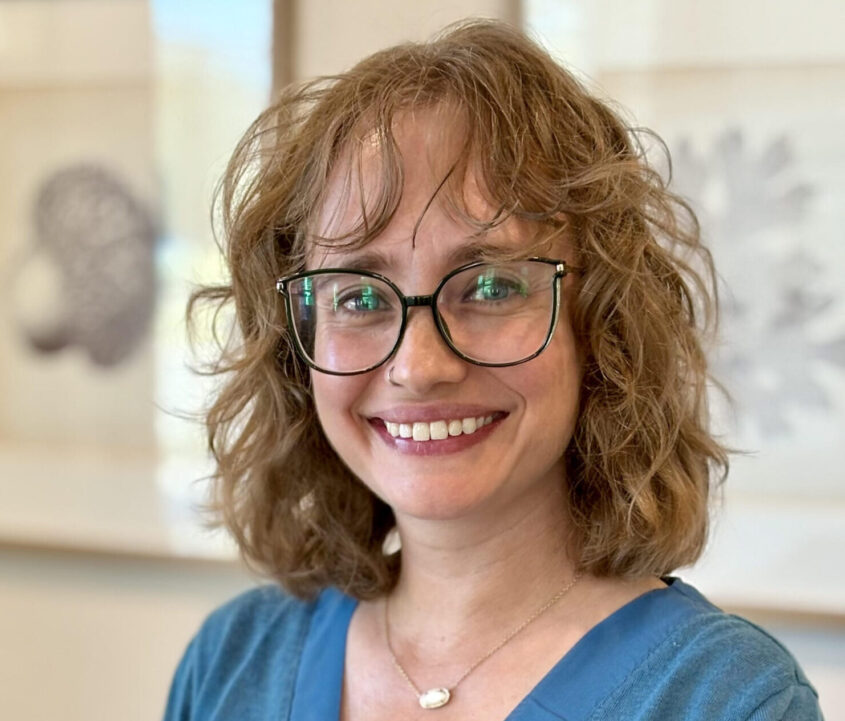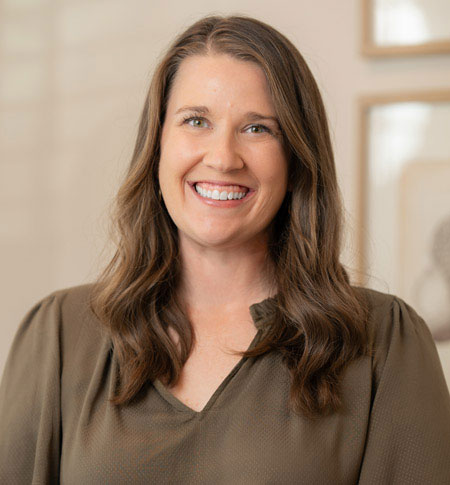I. Introduction to Autism – Autism is a fairly common disorder that affects 4-5 out of every 10,000 children (Ritvo and Freeman, 1978). Out of those children, there are 3-4 autistic males for every autistic female (Morgan, 1990; Lotter, 1966; Ornitz, 1989; Wing et al., 1976). With the evolving and more updated definition of autism, the awareness of autism’s prevalence has grown to almost quadrupling the number of children diagnosed (Morgan, 1990).
A. The DSM-IV (psychological reference book that outlines the criteria for every psychological disorder) defines the Autistic Disorder through three major categories. The autistic child will show significant impairment in (i) social interactions and (ii) communication, as well as have (iii) restricted, repetitive and stereotyped patterns of behavior, interests, and activities. They must display at least six items from the three criterion points, with at least two from the social interactions category and one from each of the communication category and patterns of behavior category.
1. 4 possible impairments in social interactions:
a. Impairment of nonverbal behaviors used to regulate social interaction (e. g., eye contact, facial expression, body posture, and gestures).
b. Failure to develop peer relationships appropriate to developmental level.
c. Lacking in spontaneously seeking to share enjoyment, interests, or achievements with other people (e. g., “Hey, Mom, look at that!”).
d. A lack of social or emotional reciprocity.
2. 4 possible impairments in communication:
a. A delay in, or total lack of, the development of spoken language (not accompanied by an attempt to compensate through alternative modes of communication such as gesture or mime)
b. In individuals with adequate speech, marked impairment in the ability to initiate or sustain a conversation with others.
c. Stereotyped and repetitive use of language or idiosyncratic language.
d. A lack of varied, spontaneous make-believe play or social imitative play appropriate to developmental level
3. 4 possible restricted repetitive and stereotyped patterns of behavior, interests, and activities:
a. An encompassing preoccupation with one or more stereotyped and restricted patterns of interest that is abnormal either in intensity or focus. (i.e., The child stares at an object, person, or fixed point for an abnormally long period of time)
b. Apparently inflexible adherence to specific, nonfunctional routines or rituals (i.e. The child has a temper tantrum because his/her daily routine was switched around or his/her toothbrush was not in the correct location.).
c. Stereotyped and repetitive motor mannerisms (i.e. hand or finger flapping or twisting, or complex whole-body movements).
d. Persistent preoccupation with parts of objects.
B. Delays or abnormal functioning in at least one of the areas of (1) social interaction, (2) language as used in social communication, or (3) symbolic or imaginative play, with an onset prior to age 3 years are indicators of autism.
C. Although the DSM-IV has detailed requirements for what makes a child or person autistic, researchers and clinicians do not fully know what causes the disorder, and there is still some disagreement on the best way to diagnose, assess, and treat it.
II. Pervasive Developmental Disorders (Kronenberger and Meyer, 1996, pp. 376-377) A. Autism is one of five Pervasive Developmental Disorders (PDDs). The other four are:
1. Rett’s Disorder – language and social delays like autism, but with possibly greater levels of social interaction and more motor problems
2. Childhood Disintegrative Disorder (CDD) – develops in late toddler-early preschool years after two years of normal development and is characterized by a loss of their early skills in the language, social, play, adaptive functioning, and motor areas.
3. Asperger’s Disorder – characterized by social and behavioral deficits without significant language, cognitive, or adaptive functioning deficits.
4. PDD Not Otherwise Specified (PDDNOS) – is diagnosed when a child shows considerable, pervasive, “autistic-like” impairment in social, communication, or behavioral skills but does not meet criteria for any specific PDD diagnosis.
B. Since most of the literature, empirical studies, and treatment of PDDs have been on autism, it is fortunate that the findings can be applied to the other PDDs with appropriate modifications to symptom differences.
III. Three theories of autism’s etiology (origin)
A. Family Theories
1. Historically, parents of autistic children were described as aloof, intelligent, cold, perfectionistic, achievement-oriented, and wealthy (Morgan, 1990; Ornitz and Ritvo, 1976).
2. Other theories also postulated that parental hostility, rejection, and disturbed family dynamics influence or cause the onset of autism. However, those theories have received no empirical support (Morgan, 1990; Ornitz and Rivo, 1976; Ornitz, 1989). On the other hand, there is evidence that having a child with autism may contribute to family stress and parental problems (Ornitz and Ritvo, 1976).
B. Biological Theories
1. Postulate: Autism is the result of a genetic-neurological-physiological defect that causes the symptoms of the disorder.
a. Twin studies showed that identical twins have a higher rate of both individuals being autistic than fraternal twins.
b. Autism cuts across geography, culture, and racial populations, suggesting a biological cause as opposed to a cultural one (Ornitz and Ritvo, 1976).
2. Research evidence indicates that a biological cause exists but that current studies are too crude to identify it (Ornitz and Ritvo, 1976; Ornitz, 1989; Newsom and Rincover, 1989; Morgan, 1990). Although several arguments are outdated, circular, or just plain wrong, the biological theory remains a leading candidate for the explanation of autism.
C. Behavioral Theories
Lovaas (1979)
1. Postulate: Autism develops because autistic children do not find social stimuli to be reinforcing.
a. Typical infants learn that social stimuli (e.g., interaction, praise, imitation) are rewarding by connecting them with intrinsic reinforcers such as food, comfort, warmth.
b. This connection does not occur in autistic children because of their biological predisposition, environmental situations, and parental behavior, resulting in a lack of social interaction or interest in the child.
c. This lack of social interest then leads to severe problems because the children do not learn from their environment how to behave like socialized human beings.
4. Assessment
A. Medical – the child’s primary care physician determines which medications might help them behave and cope better.
B. Educational – teachers and speech-language pathologists assess the child and give recommendations
C. Mental health – psychologist gives (1) a specific test to identify autistic symptoms, (2) an intelligence test – 75-80% of autistic children are mentally retarded (Morgan, 1990; Ornitz, 1989; Ornitz and Ritvo, 1976) – and (3) a test of adaptive functioning, to find the extent to which the child functions effectively within his or her environment and can take care of him/herself.
5. Treatment Options
A. Because of the relatively low functioning of autistic children, the predominant therapies currently used require only basic communication with the child and rely on the environment, the parents, and/or medications to alter the child’s behavior.
1. Family Interventions
a. Parent Psychotherapy
i. Education about autism and its effects on parent stress and emotions
ii. Parenting stress management
ii. Behavioral Interventions
a. Morgan (1990), Lovaas et al. (1974), and Lovaas (1987)
Reduce interfering and dangerous behavior (usually self-injurious or self-stimulating like spinning, twirling, head banging, rocking, self-scratching, and self-hitting) through:
i. Time-out
~ typically less effective for lower functioning children since they do not mind social separation
ii. Differential reinforcement of other behaviors
~ rewarding behaviors that can substitute for the undesirable behavior with primary reinforcers, like food
iii. Positive practice
~ having the child practice appropriate behaviors, like holding his head still instead of banging it
~ not recommended because it can result in physical battles, emotional upset, and possibly injury
iv. Ignoring
~ may reduce self-stimulating behavior if children seek attention, but is not advisable if injury to self, others, or property is occurring.
v. Punishment techniques
~ most effective ways to reduce self-stimulating behaviors (Lovaas et al., 1974)
~ electric shock therapy
– usually used as last resort and under supervision of guardian and a human rights committee (Morgan, 1990)
~ say “no” loudly, paired with a mild slap to the thigh
– care should be taken to administer properly, especially when parent is angry (Lovaas, 1987)
b. Lovaas et al. (1974), Newsm and Rincover (1989)
Teach learning readiness skills
i. Learning that adults are sources of reinforcement
~ giving the child a piece of candy whenever the child seeks proximity or basic interaction with the adult
ii. Attending to the adult
~ giving candy whenever the child makes eye contact with an adult
iii. Learning to comply with requests
iv. Imitation
~ rewarding with candy for simple gesture imitation
v. Adaptive use of language
~ rewarded for any utterances; then rewarded for vocalization that follow the speech therapist; rewarded only when the vocalizations are close to the sounds made by the therapist; phonemes are taught and combined into words; use words to label objects; comprehension; combine words to create meaningful sentences.
c. Lovaas (1987), Newsom and Rincover (1989)
Teach social behaviors
i. proximity seeking, social reinforcement, modeling, affect, and play.
ii. Pair the social reinforcement with a more basic reinforcer.
d. Schreibman and Pierce (1993)
Teach pivotal skills
i. learning motivation and responsivity to multiple cues instead of learning every behavior one at a time.
ii. Presumably, once these skills are learned, the child will be in a position to learn a variety of other adaptive behaviors.
iii. avoids using food as a source of reinforcement
iv. taught with techniques that allow the child to have greater control over the environment, giving the child access to favored toys, reinforcing very simple approximations of the target behavior, and repeatedly testing and rewarding the child for performance of overlearned tasks
— Although time-consuming and expensive, behavioral techniques are currently the basic treatment of choice for autism.
3. Medication
Ornitz (1989), Ornitz and Ritvo (1976), Morgan (1990),
a. no current evidence that any specific medication consistently removes the core symptoms of autism
b. Ornitz and Ritvo (1976) suggest that medication only be used for autism when behavioral interventions have failed.
c. usually prescribed for associated features of autism, such as dangerous behavior, psychotic behavior, aggressiveness, hyperactivity, sleep disturbance, and lack of behavioral control
d. usually sedatives or tranquilizers to calm overly active, aggressive, self-injurious, or “out-of-control” children.
e. Medication should be considered only in cases of extreme behavior problems that have not responded to behavioral techniques.
References
Kronenberger, W. G., and Meyer, R. G. The Child Clinician’s Handbook. Needham Heights, Massachusetts: Ally & Bacon. Copyright (1996), pp. 375-405.
Lotter, V. (1966). Epidemiology of autistic conditions in young children: I. Prevalence. Social Psychiatry, 1, 124-137.
Lovaas, O. I. (1979). Contrasting illness and behavioral models for the treatment of autistic children: A historical perspective. Journal of Autism and Developmental Disorders, 9, 315-323.
Lovaas, O. I. (1987). Behavioral treatment and normal educational and intellectual functioning in young autistic children. Journal of Consulting and Clinical Psychology, 55, 3-9.
Lovaas, O. I., Schreibman, L., and Koegel, R. L. (1974). A behavior modification approach to the treatment of autistic children. Journal of Autism and Childhood Schizophrenia, 4, 111-129.
Morgan, S. B. (1990). Early childhood autism: Current perspectives on definition, assessment, and treatment. In S.B. Margan and T. M. Okwumabua (Eds.), Child and adolescent disorders: Developmental and health psychology perspectives (pp. 3-45). Hillsdale, NJ: Erlbaum.
Newsom, C., and Rincover, A. (1989). Autism. In E. J. Mash and R. A. Barkley (Eds.), Treatment of childhood disorders (pp. 286-346). New York: Guilford Press.
Ornitz, E.M. (1989). Autism. In C. G. Last and M. Hersen (Eds.), Handbook of child psychiatric diagnosis (pp. 233-278). New York: Wiley.
Ornitz, E. M., and Ritvo, E. R. (1976). The syndrome of autism: A critical review. American Journal of Psychiatry, 133, 609-621.
Ritvo, E., and Freeman, B. J. (1978). Current research on the syndrome of autism. Journal of Autism and Childhood Schizophrenia, 8, 162-167.
Schreibman, L., and Pierce, K. (1993). Achieving greater generalization of treatment effects in children with autism: Pivotal response training and self-management. Clinical Psychologist, 46, 184-191.
Wing, L., Yeates, S. R., Brierley, L. M. and Gould, J. (1976). The prevalence of early childhood autism: Comparison of administrative and epidemiological studies. Psychological Medicine, 6, 89-100.







